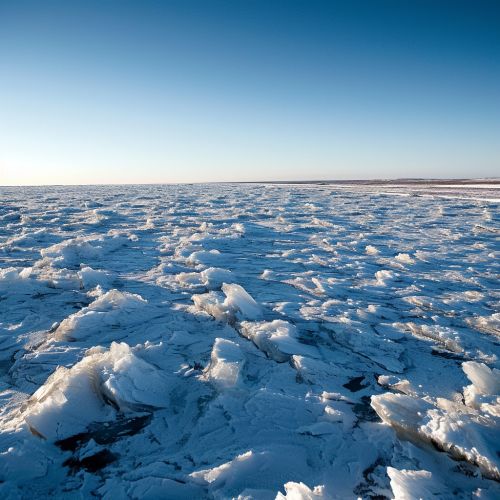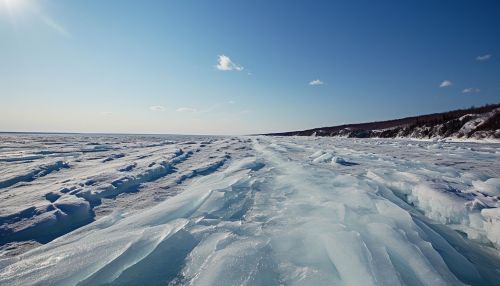Ice Sheets
Introduction
Ice sheets are large, continental masses of glaciated ice that cover more than 50,000 square kilometers. They are primarily found in Antarctica and Greenland, which together hold the vast majority of the world's fresh water. Ice sheets are an integral part of the Earth's cryosphere, playing a critical role in global climate regulation and sea level.


Formation and Characteristics
Ice sheets form in areas where snow that falls in winter does not melt entirely in summer. Over time, the accumulated snow compresses into ice, forming a sheet that can extend over thousands of kilometers. The thickness of ice sheets can vary greatly, but they can reach over 4 kilometers in some parts of Antarctica.
Ice sheets are characterized by their size, thickness, and the unique physical properties of ice. They are dynamic systems, constantly moving and changing in response to climate and the underlying topography. This movement, driven by gravity and the weight of the ice, can cause the ice sheet to spread outwards and downwards, a process known as ice flow.
Ice Sheet Dynamics
The dynamics of ice sheets are complex and influenced by a variety of factors. These include the amount of snowfall (accumulation), the rate of melting (ablation), and the geothermal heat flux from the Earth's interior. Ice sheets also respond to changes in climate, with warmer temperatures leading to increased melting and ice loss.
Ice sheets move primarily through two mechanisms: internal deformation and basal sliding. Internal deformation occurs when the ice itself deforms under its own weight, while basal sliding happens when the ice sheet slides over the underlying bedrock, lubricated by a thin layer of water.
Impact on Global Climate
Ice sheets have a significant impact on the global climate. They reflect a large amount of solar radiation back into space due to their high albedo, or reflectivity. This helps to cool the Earth's surface and regulate the global climate.
However, as ice sheets melt due to global warming, they contribute to sea level rise. This is because the water from melting ice eventually makes its way into the ocean, increasing its volume. Additionally, the loss of ice cover can lead to a positive feedback loop, where less ice means less solar radiation is reflected back into space, leading to further warming and more ice melt.
Current State and Future Projections
Currently, the world's ice sheets are losing mass at an accelerating rate. This is largely due to increasing temperatures caused by anthropogenic climate change. The loss of ice from the Greenland and Antarctic ice sheets has been particularly pronounced, contributing significantly to global sea level rise.
Future projections for ice sheets are uncertain and depend on a variety of factors, including future greenhouse gas emissions and the response of ice sheets to warming. However, it is expected that ice sheets will continue to lose mass in the future, contributing to further sea level rise and potentially leading to significant impacts on coastal communities and ecosystems.
